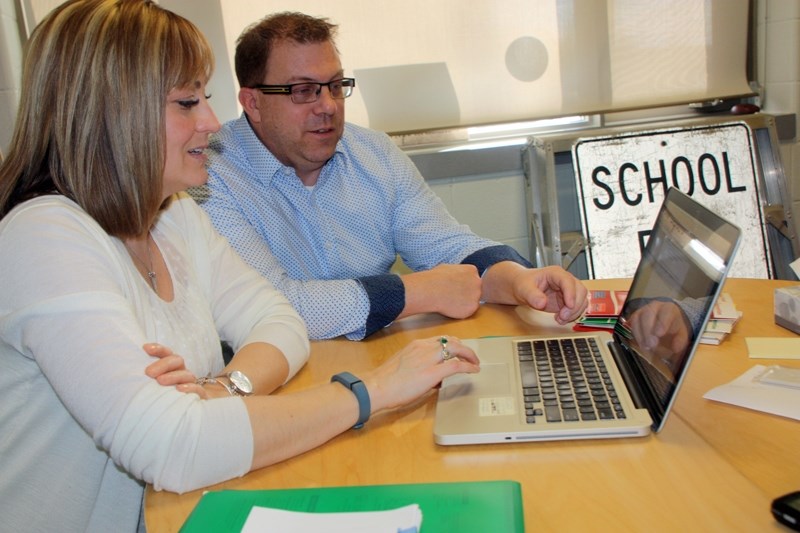Virtually everyone has talked to a computer at one time or another.
However, for students at Dr. Morris Gibson Elementary School and others in the Foothills School Division they aren’t talking to computers because something won’t download. They are doing it to improve their reading skills.
“We’re just using technology to help students learn,” said principal Kevin Newman. “In regards to the technology piece, speech-to-text and text-to-speech are big ones.”
Speech-to-text technology has a student speaking into the computer and the words are shown on screen. Text-to-speech does just the opposite, taking text – often the student’s own words – which is then read back by the computer.
“We have so much technology here, everyone uses it,” said vice-principal Bobbi Hunter. “We have just added to the normalcy by giving them a tool to support reading.”
As it turns out talking into a computer may be ideal for the reluctant writers and readers.
“If there are issues with reading, often there are also issues with writing,” Hunter said. “Ultimately, it comes down to teachers. They are often the ones who recognize there is a need for a student — what kids do we have to give some extra enhancement to in order for them to do what they are supposed to do.”
The text-to-speech component has text being read back to the students, while each word is highlighted as it is pronounced.
“It allows the opportunity for them to see it while hearing it at the same time,” Hunter explained. “For our visual (learning) kids that works really well. It paces it for them and they can see what they are reading.”
Newman said the tools are invaluable in finding where a struggling student is at with regards to learning.
“We want them to be able to communicate what they are learning to us,” Newman said. “If they can’t generate written outputs for us, then we can’t understand what they are learning and where we need to fill gaps in.
“Speech-to-text allows us to find out what do they have and what do they know and then work from there.”
He added the tools are also beneficial for students who are good readers, but may not have the motor skills to write.
Newman stressed these are tools to help the students learn how to read and write, while progressing through the education system. Students aren’t about to get a pass on learning two of the three Rs. The goal is to have them ready to tackle Steinbeck’s Of Mice and Men and other literature in later years.
“It’s not like we stop teaching them how to read and write,” Newman said. “Our goal is to get every kid reading and writing where they need to be. But it is clear that not every child is going to make it there. So how do we augment that - how do we support them? How do we give them the tools they can use throughout their schools and their lives?”
The technology component of reading comes into play when students’ reach about the Grade 3 level.
“We don’t use it a whole lot in Grade 1,” Hunter said. “Early literacy skills are still really important, so we want to give them the background.”
The literacy focus at Dr. Morris Gibson isn’t necessarily on students who struggle with reading and writing. It’s also directed at those students who might pick up some Tolkien before Goosebumps.
Strategies are in place for strong readers as well.
“We also have to address the excellence piece as well,” Hunter said. “Right now in Grade 6 we have a group of students reading The Hobbit, because that is a higher level novel.
Together as a group, they are doing similar things as other students, just at a higher level.”
The Hobbit is typically studied at the junior high level.
Getting students ready for the next level at Okotoks Junior High School is what the literacy program at Doc Gibson is all about.
“Our goal as a school is that by the end of Grade 6 have every student reading at grade level by the time they leave our building,” Newman said. “Last year, for our Grade 6 provincial achievement tests we had 100 per cent of our students received the acceptable standard for language arts.”




